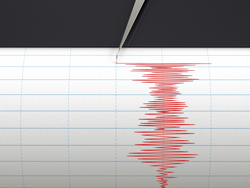Improved earthquake prediction
Science's quest to predict earthquakes and warn people of their destructive force has been an elusive one, but there is new hope in this direction thanks to major advances in technology. In recent years, researchers have found a link between changes in electromagnetic phenomena (e.g. radio signals and plasma waves) in the ionosphere that occur before a large earthquake. Through advanced satellite and ground monitoring of radio signals that change a few days before a major earthquake, researchers can radically improve the prediction of large seismic events. In this context, the EU-funded project 'Search for electro-magnetic earthquake precursors combining satellite and ground-based facilities' (SEMEP) sought to build on this potential. The project studied anomalies in the electromagnetic environment and outlined the types of measurements required to improve forecasting. Interestingly, the concept can also be applied to volcanic eruptions, which also instigate a change in electromagnetic behaviour several days or hours before a natural event occurs. To achieve its aims, the project team analysed data from French and Russian microsatellites, looking as well into ground-based measurements that could also help predict earthquakes. In addition, the team investigated data from very-low–frequency (VLF) and low-frequency (LF) receiver stations in Europe, Japan and Russia. It studied plasma waves in the vicinity of earthquake epicentres and sought to correlate the waves' behaviour with seismic activity. The project's website(opens in new window) includes many of the project's achievements and results. SEMEP also undertook an in-depth study of the coupling between the Earth's lithosphere, atmosphere and ionosphere, investigating internal gravity waves (IGWs) caused by changes within the crust from increased seismic activity. Moreover, the project team noted that conducting a joint satellite and ground-based analysis in two different seismic zones increases the chance of finding events related to different geophysical conditions. Overall, the project's work could help develop an advanced warning system for earthquakes, reducing the possibility and magnitude of a naturally caused disaster. This will also help protect critical infrastructure such as power plants, gas, electric services and water supplies. The results have been disseminated to the scientific community through publications and journals, paving the way for more effective systems in forecasting earthquakes.







